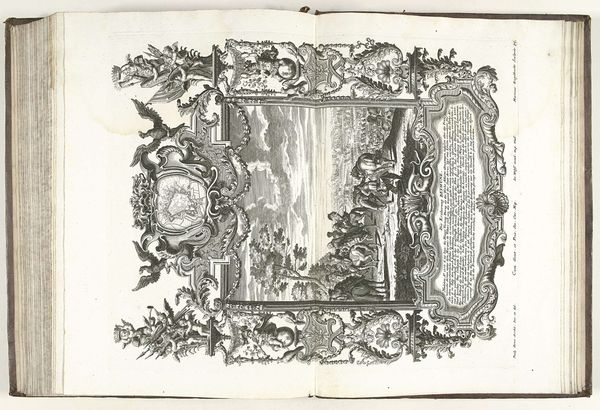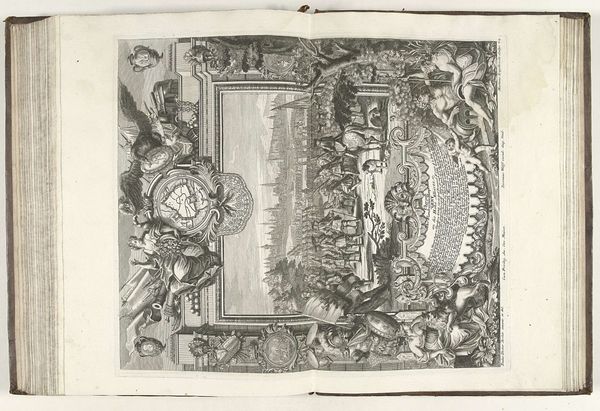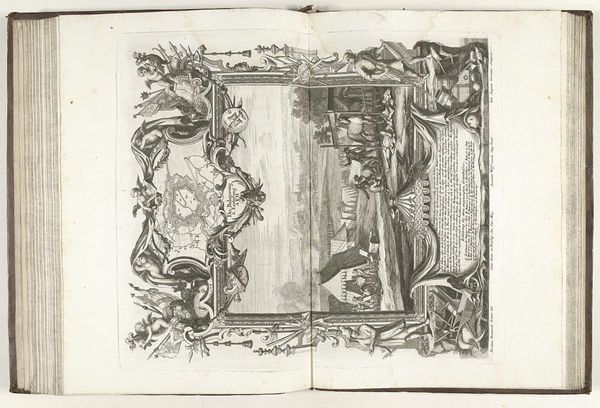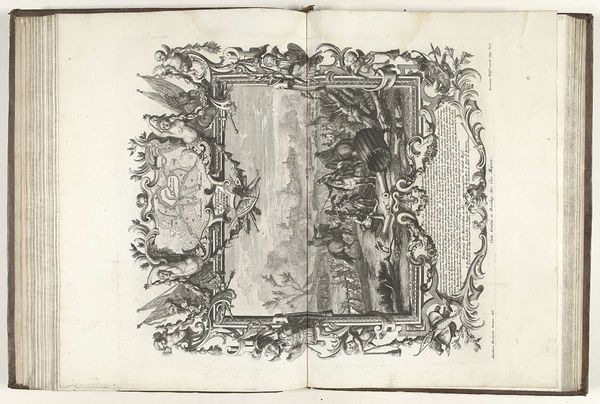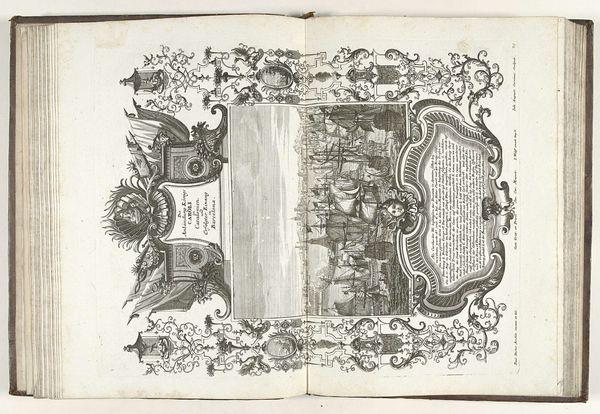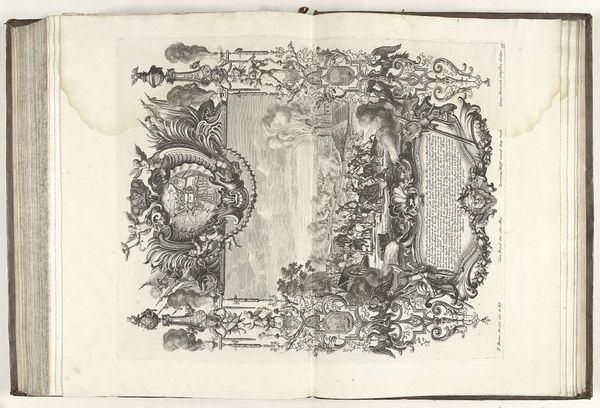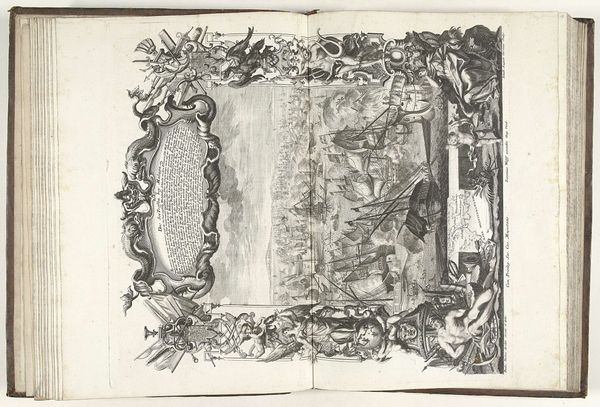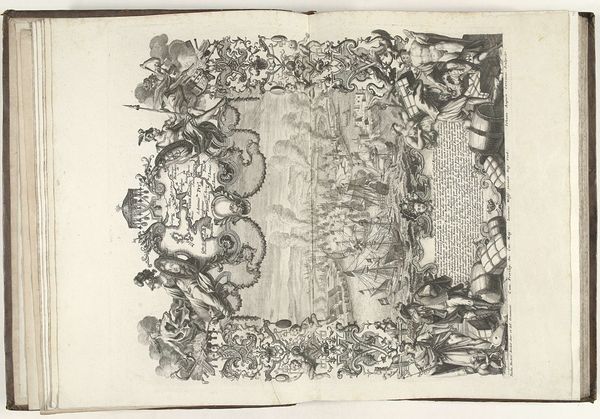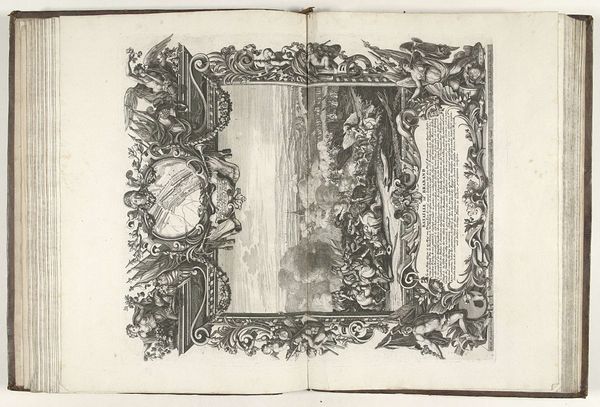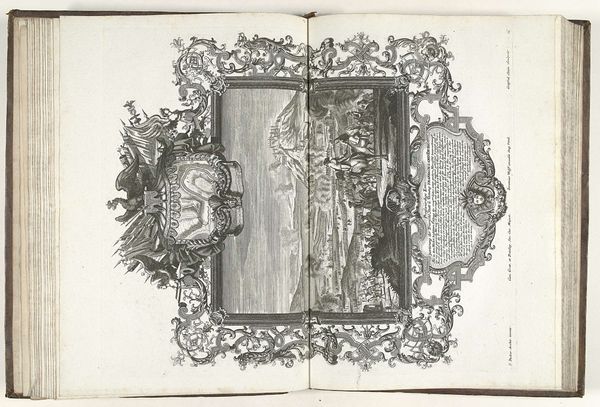
print, paper, engraving
#
narrative-art
#
baroque
# print
#
paper
#
line
#
history-painting
#
engraving
Dimensions: height 445 mm, width 395 mm
Copyright: Rijks Museum: Open Domain
Editor: This is an engraving titled "Slag bij Luzzara, 1702" created between 1712 and 1715 by Johann Balthasar Probst, currently held at the Rijksmuseum. It's fascinating; the sheer amount of detail is overwhelming! What stands out to you in terms of its composition and form? Curator: Note the duality within the singular plane: it is partitioned into clearly delineated spaces. On one side, a radial composition; and on the other, what is apparently intended to represent the aftermath of physical conflict rendered through the medium of engraving. It is instructive to consider the artist’s intentional balancing of graphic elements within the frame. What effects emerge, stemming from the marked contrasts in form and density? Editor: It looks very deliberate, almost like a diagram alongside the chaos of battle. The radial part has very controlled and repetitive components compared to the sprawling horses. Curator: Precisely. It manifests as an overt structural element in contrast to an uncontrolled explosion. Observe the fineness of lines that construct this scene. The technical control serves a purpose, not merely to illustrate but to impart specific feeling through the manipulation of artistic means. How might that fineness of detail interplay with your perception of the artwork as a whole? Editor: The stark line work, and lack of tone creates a crisp contrast to the brutal topic; like the difference between objective record versus sensational artwork. I see it as more detached. Curator: An interesting observation. The rigorous use of line dictates our experience and imbues this piece with its distinctive and unsettling tone. Ultimately, that line allows the viewers space to contemplate the underlying structure of not just the composition, but also the war. Editor: So by examining the composition and technical details we gain a greater understanding of the work and its affect on the audience, without additional details on context? I hadn’t thought about looking at art that way. Curator: It is one possible interpretative lens. Reflect on how these elements resonate to inform the larger experience of encountering it.
Comments
No comments
Be the first to comment and join the conversation on the ultimate creative platform.
